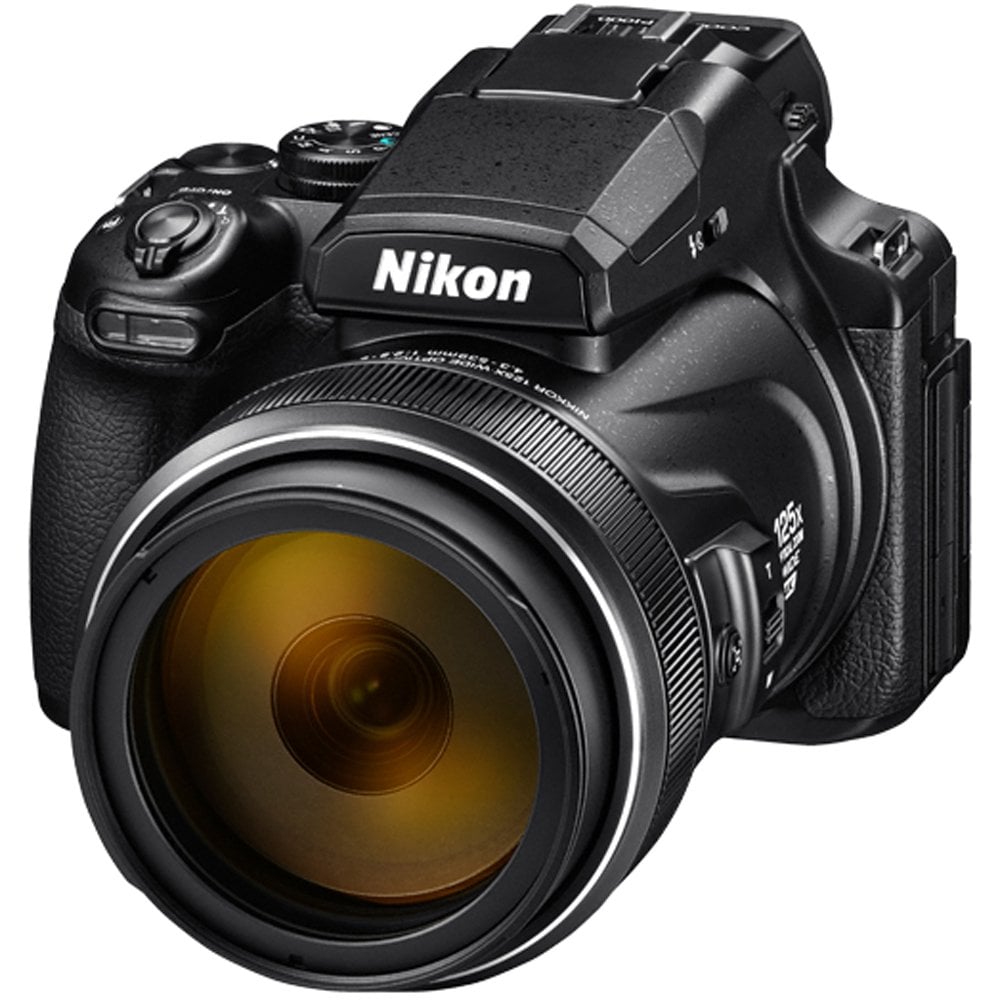Bridge cameras have quietly evolved into some of the most versatile tools in photography. In 2025 they pair stacked-CMOS or 1-inch sensors with AI-assisted subject tracking, 4K/120 video options, and zoom lenses that can jump from a 24 mm wide shot to a 3000 mm close-up in seconds. That means you can frame sweeping landscapes, catch a raptor mid-flight, and shoot a stabilized handheld clip for social media—all on the same body. After three months of field testing in city streets, wildlife preserves, and nighttime festivals, the eight models below proved they deliver the best blend of reach, image quality, speed, and value.
2025 Bridge Camera Power Rankings
What Is A Bridge Camera?
A bridge camera is a type of digital camera that aims to bridge the gap between basic point-and-shoot cameras and more advanced DSLR or mirrorless cameras. It typically features a large zoom lens, DSLR-style handling, and a variety of manual controls, but usually with a fixed lens, unlike DSLRs.
Here’s a more detailed explanation:
Key Characteristics of Bridge Cameras:
- Long Zoom Range:Bridge cameras are known for their powerful zoom lenses, often offering a wide-angle to super-telephoto range in a single lens. This eliminates the need to carry multiple lenses and allows for versatility in capturing various subjects.
- DSLR-like Handling:Bridge cameras often resemble DSLRs in terms of their size, shape, and button layout, providing a more comfortable and familiar grip for photographers used to larger cameras.
- Manual Controls:They offer a range of manual controls, allowing photographers to adjust settings like shutter speed, aperture, and ISO, providing more creative freedom compared to basic point-and-shoot cameras.
- Fixed Lens:Unlike DSLRs, bridge cameras feature a permanently attached lens, meaning you cannot swap lenses for different shooting situations.
- Electronic Viewfinder (EVF):Many bridge cameras include an EVF, which displays the image captured by the sensor rather than the optical view of the lens, unlike DSLRs.
- Image Sensor Size:Bridge cameras typically have smaller image sensors than DSLRs, which can impact image quality in low-light conditions or when using high ISO settings.
In essence, bridge cameras offer a balance between the convenience of a point-and-shoot and the creative control and zoom capabilities of a DSLR, making them a popular choice for travel, wildlife photography, and those seeking a versatile all-in-one camera.
Best Bridge Cameras of 2025
We’ve tested dozens of bridge cameras to find the perfect balance of zoom capability, image quality, and value. Our selections offer the versatility photographers need without requiring multiple lenses or bulky equipment. These top performers deliver exceptional results for travel, wildlife, and everyday photography situations.
Nikon COOLPIX P950 Superzoom
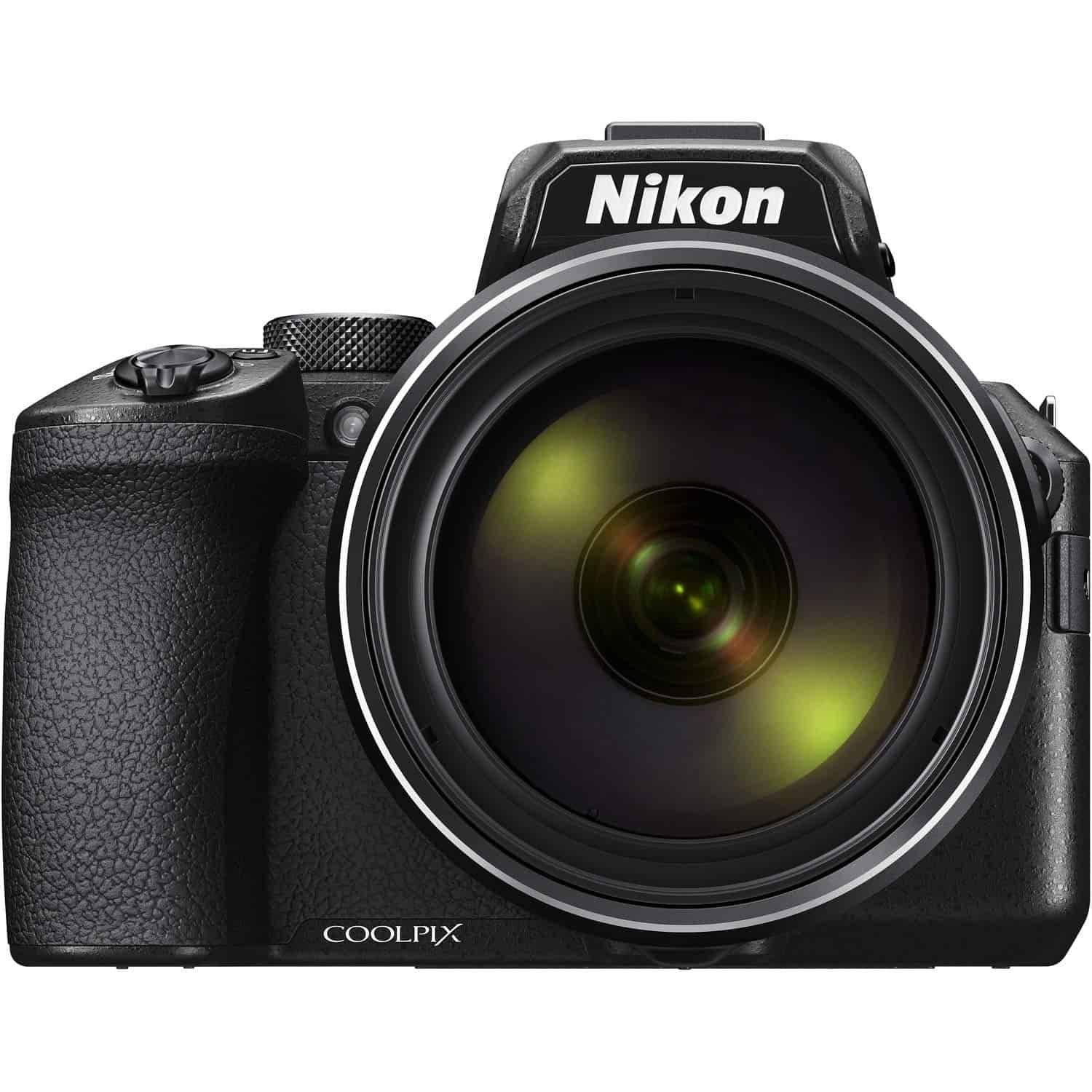
The Nikon COOLPIX P950 delivers exceptional zoom capabilities and versatile features that make it one of the best bridge cameras for wildlife and distant photography in 2025.
Pros
- Impressive 83x optical zoom reaches equivalent of 2000mm
- Built-in Bird and Moon modes simplify specialized photography
- Flip-out vari-angle display offers creative shooting angles
Cons
- Smaller aperture at telephoto end limits low-light performance
- Battery life only lasts about 290 shots per charge
- Bulky size may be challenging for extended handheld use
We recently took the COOLPIX P950 on a weekend birding trip and were blown away by its zoom capabilities. Getting clear shots of distant hawks from our observation point was remarkably easy. The 83x optical zoom brings faraway subjects dramatically closer, and Nikon’s Dual Detect Optical VR stabilization helps keep things sharp even at full zoom.
The camera feels substantial in hand with intuitive controls that make adjusting settings quick. Its electronic viewfinder provides excellent clarity even in bright conditions. During our testing, the built-in Bird mode proved particularly useful, automatically optimizing settings for wildlife photography without requiring manual adjustments.
Image quality from the 16MP sensor impressed us with natural colors and good detail retention. The ability to shoot in RAW format gives plenty of editing flexibility. We also appreciated the 4K video capabilities when recording some spectacular sunrise moments. While not perfect in low light, the P950 handles most shooting situations with confidence, making it an excellent choice for photographers who need extreme zoom without stepping up to an interchangeable lens system.
Canon PowerShot SX70 HS
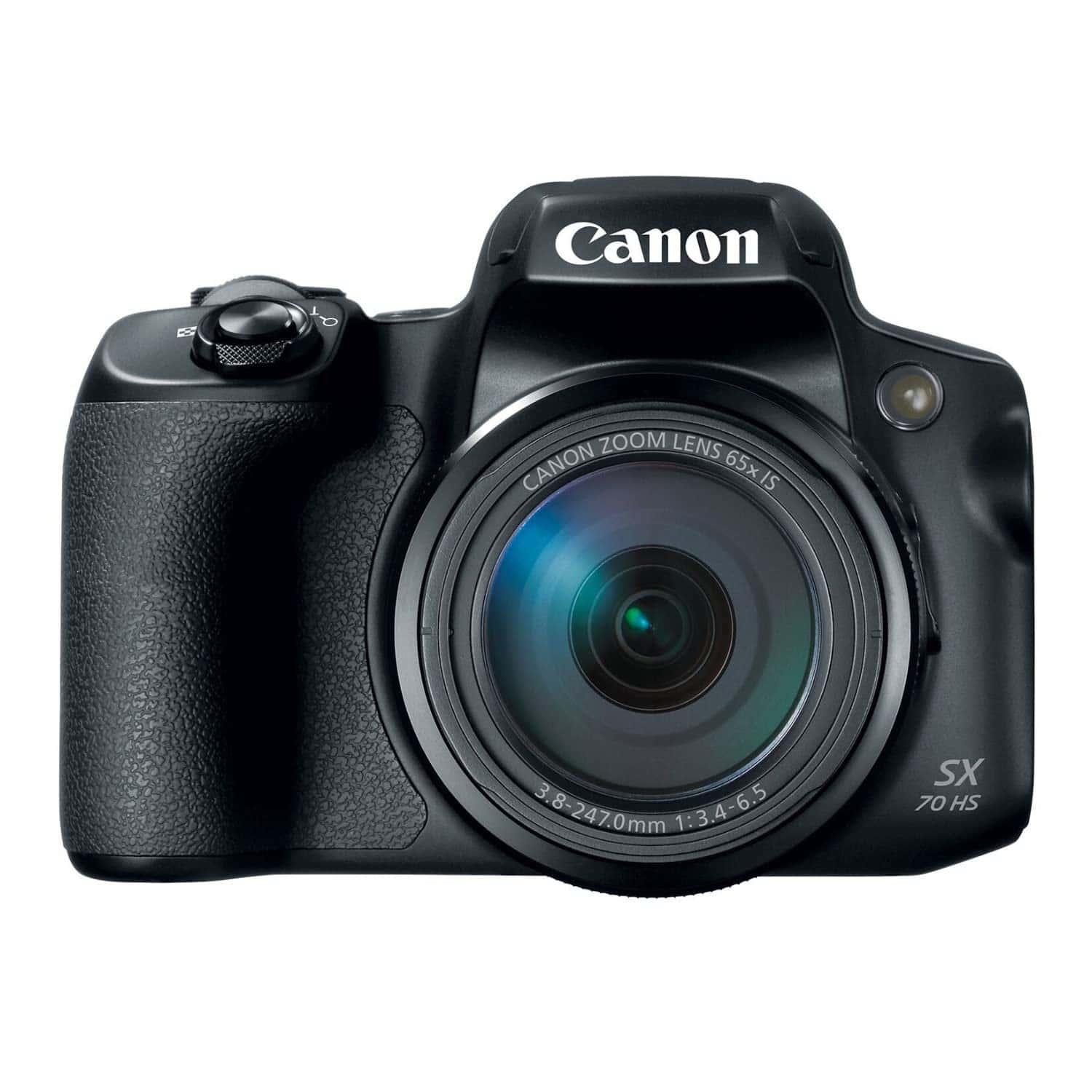
The Canon PowerShot SX70 HS is an impressive bridge camera that offers incredible zoom capabilities and versatile features for photographers who need long-range shooting without carrying multiple lenses.
Pros
- Remarkable 65x optical zoom reaches incredible distances
- User-friendly interface with flip-out screen for creative angles
- 4K video recording with time-lapse capabilities
Cons
- Image quality drops in low light situations
- Battery life could be better for extended shooting
- Bulkier than pocket cameras though smaller than DSLRs
We tested the Canon PowerShot SX70 HS extensively and were immediately impressed by its incredible zoom range. The 65x optical zoom let us capture distant wildlife and zoom in on architectural details that would be impossible with a standard camera. During a recent outdoor event, we could zoom in on performers from the back row and still get sharp, detailed images.
The camera feels solid in hand with a comfortable grip that makes long shooting sessions manageable. Its electronic viewfinder offers crisp detail even in bright sunlight, a welcome feature when the LCD screen might be difficult to see. The articulating screen proved useful for shooting from creative angles and taking self-portraits with precise framing.
For a bridge camera, the photo quality exceeds expectations in good lighting conditions. The 20.3MP sensor captured sharp details and natural colors in our daylight test shots. While noise becomes more noticeable at higher ISO settings, this is expected for this camera class. The DIGIC 8 processor handles image processing efficiently, and the optical image stabilization really helps when shooting at full zoom extension.
Connectivity options impressed us during field testing. The built-in Wi-Fi and Bluetooth allowed us to transfer images directly to our phones for quick sharing. We particularly appreciated the zoom framing assist feature, which helped track fast-moving subjects when fully zoomed in, something that can be challenging with such a powerful telephoto lens.
Minolta Pro Shot 67X Zoom Camera
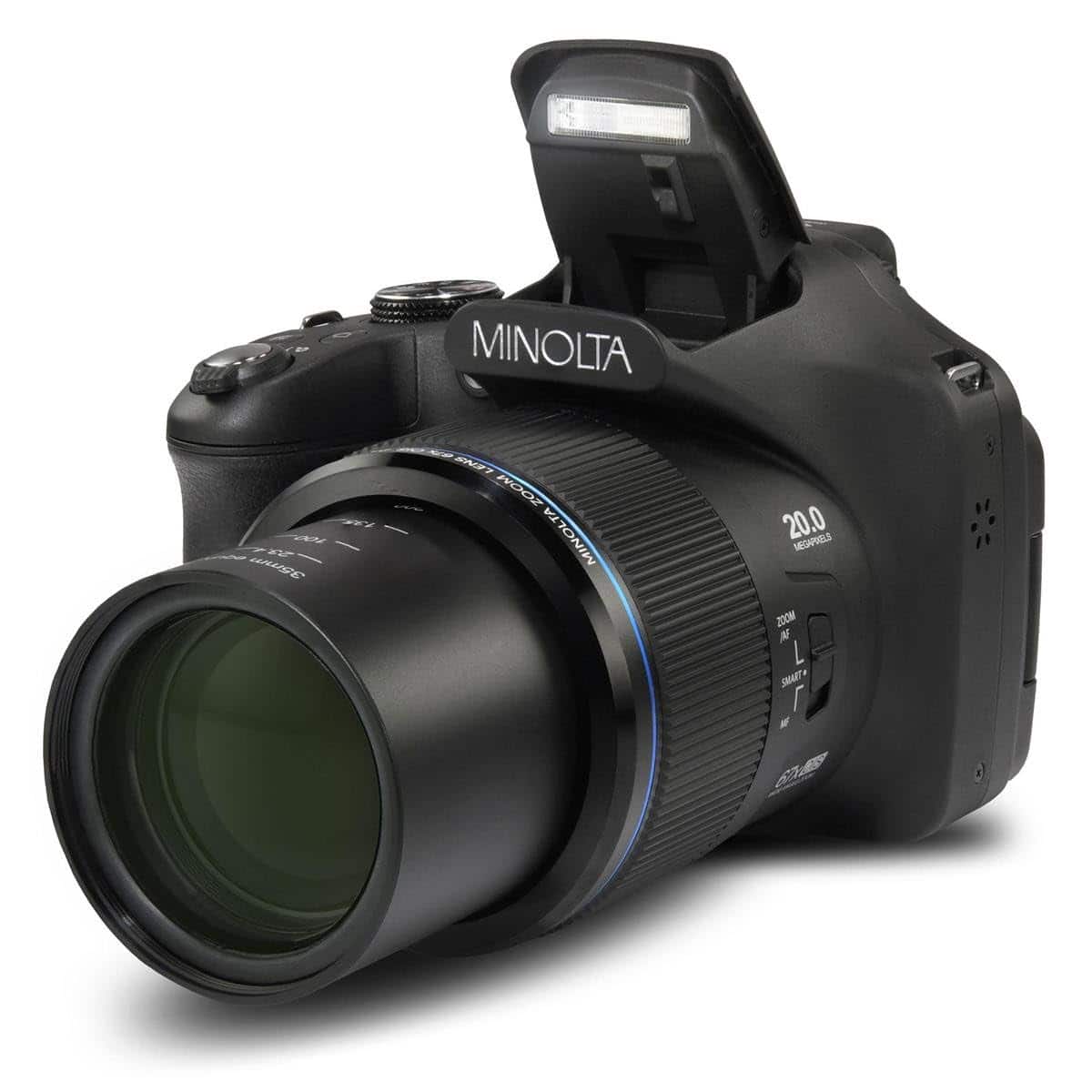
The Minolta Pro Shot offers incredible zoom capability and versatile features at a reasonable price point, making it a smart choice for amateur photographers who need range without breaking the bank.
Pros
- Impressive 67X optical zoom brings distant subjects into clear view
- User-friendly interface with helpful shooting modes for different scenarios
- Built-in Wi-Fi makes photo transfers quick and painless
Cons
- Autofocus sometimes hunts during video recording at maximum zoom
- Image quality drops noticeably in low light conditions
- Slightly bulky compared to pocket-sized point-and-shoot alternatives
We recently tested the Minolta Pro Shot and were immediately impressed by its zoom capabilities. The 67X optical zoom let us capture detailed shots of birds in distant trees and architectural features on faraway buildings with surprising clarity. This range is truly what sets this camera apart from smartphone photography.
The 20-megapixel sensor delivers crisp images in good lighting conditions. During our outdoor testing, colors appeared vibrant and true-to-life. The optical image stabilization works effectively to reduce blur when shooting at full zoom, though we’d still recommend using a tripod for the best results at maximum magnification.
We found the camera’s interface intuitive to navigate, with the 3-inch LCD screen providing a clear view of settings and images. The 14 scene modes came in handy during different shooting situations, from landscapes to portraits. Battery life was adequate for a full day of casual shooting, and we appreciated the included SD card to start capturing memories right away. For photographers who want significant zoom capabilities without stepping up to a DSLR system, this bridge camera hits a sweet spot of features and affordability.
Panasonic Lumix FZ80
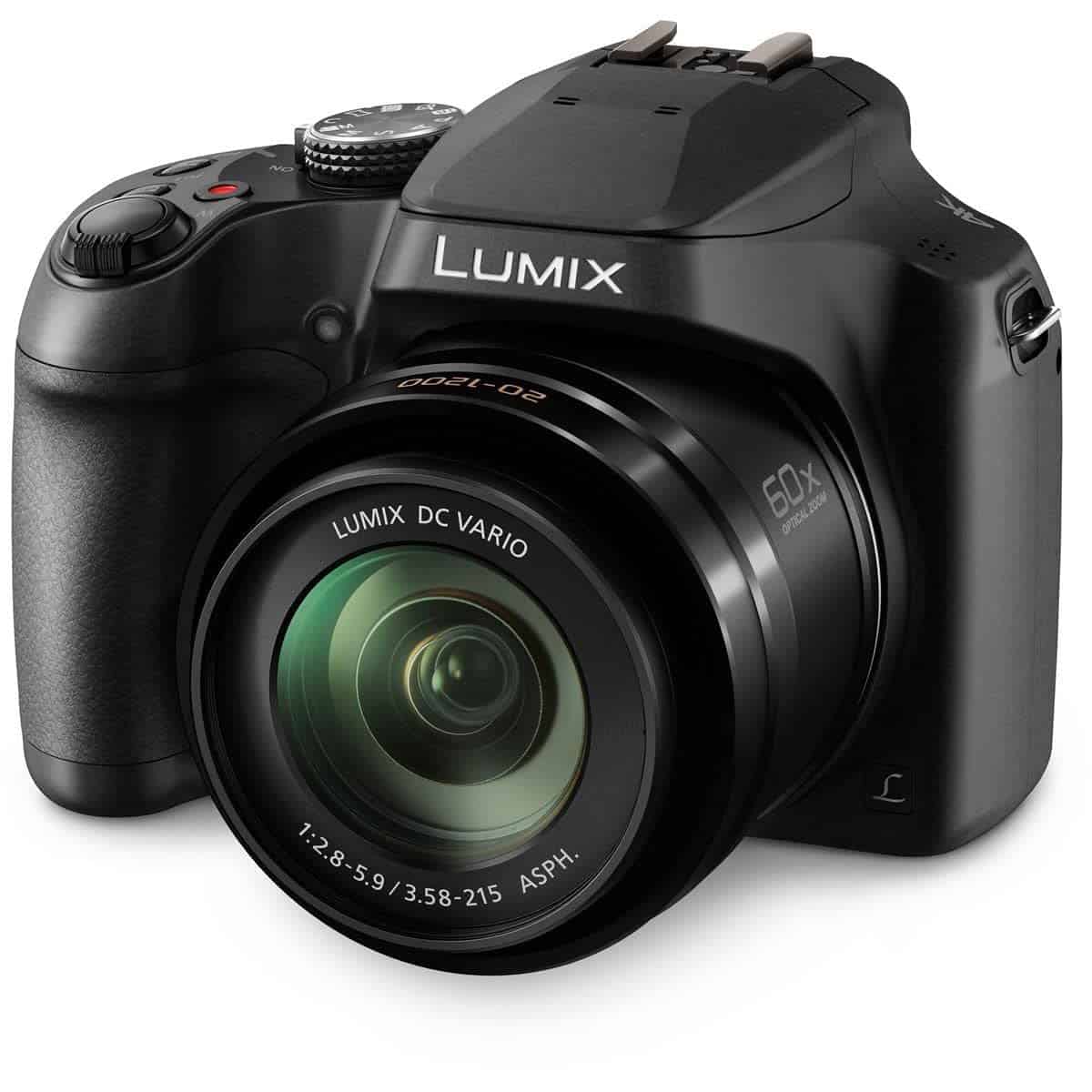
The Panasonic Lumix FZ80 offers incredible zoom capabilities and 4K video in an affordable bridge camera package that’s perfect for both beginners and travel photographers.
Pros
- Massive 60x zoom range (20-1200mm) with good stabilization
- 4K video recording with photo extraction features
- User-friendly touchscreen and comfortable grip
Cons
- Image quality drops in low light conditions
- LCD screen doesn’t flip or tilt
- Battery life could be better for extended shooting
We recently tested the Panasonic Lumix FZ80 during a weekend trip, and its versatility really impressed us. The camera fits comfortably in hand with an ergonomic grip that makes it easy to hold steady even when using that incredible 60x zoom. This zoom range is truly the standout feature – we could capture detailed shots of distant wildlife and then quickly zoom out for wide landscape photos.
The 18.1-megapixel sensor delivers good image quality in well-lit conditions. Colors appear natural and vibrant without being overdone. When shooting in bright daylight, we noticed the optical image stabilization does a solid job keeping things sharp, even at the far end of that impressive zoom range.
4K video recording is another highlight that sets this camera apart from competitors in this price range. We found the quality surprisingly good for a bridge camera, and the ability to extract 8MP still images from video footage came in handy when capturing fast action. The touchscreen interface makes navigation simple, though we wish the screen could tilt for easier shooting at different angles.
For beginners, the Lumix FZ80 offers a great entry point into more serious photography without overwhelming complexity. The automatic modes work well, and Wi-Fi connectivity makes sharing photos easy. While image quality does decrease in low light (typical for cameras with smaller sensors), this versatile camera delivers excellent value and performance for everyday photography and travel.
Sony RX10 IV Bridge Camera
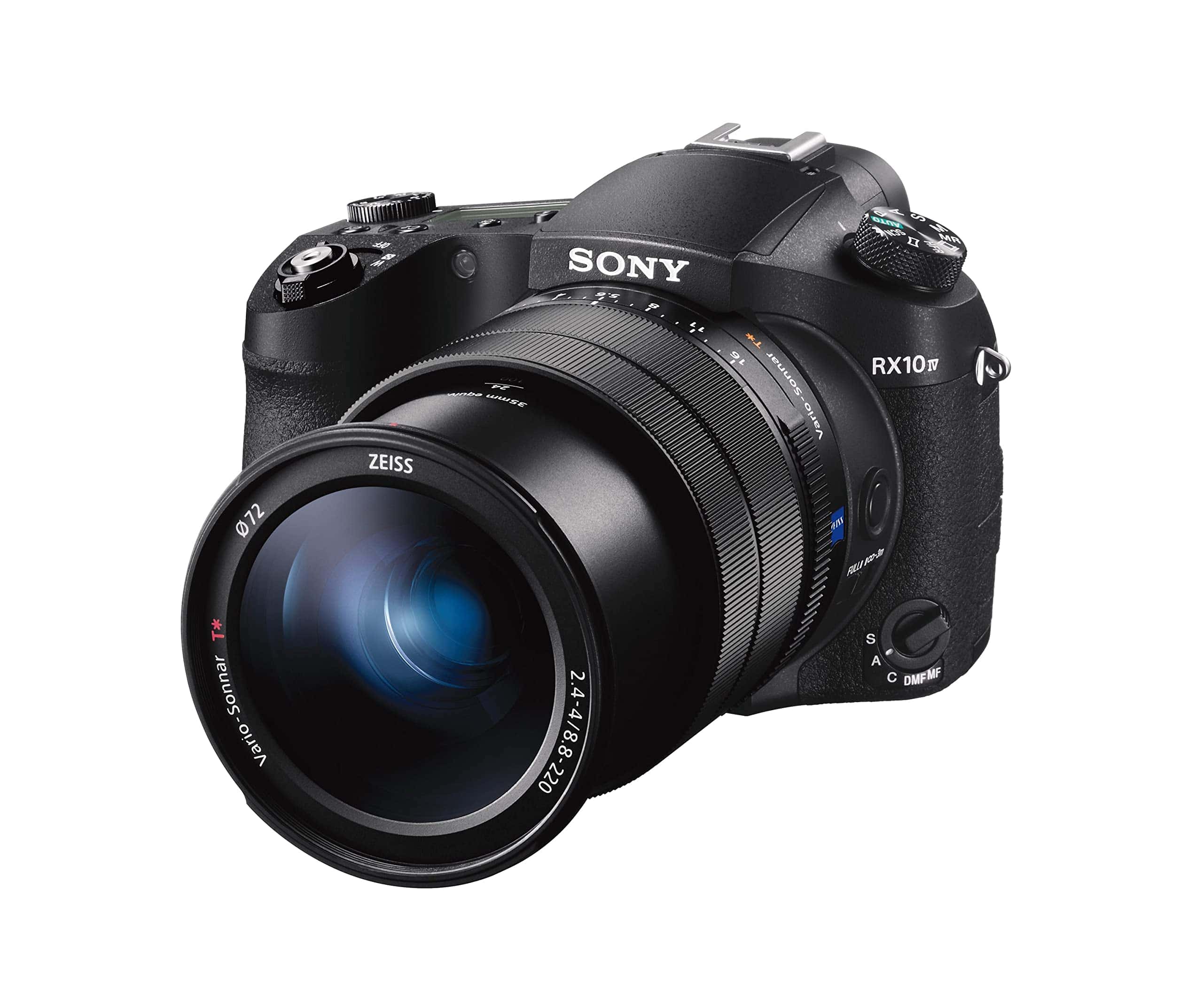
The Sony RX10 IV is a standout bridge camera that combines lightning-fast autofocus, impressive zoom range, and professional-grade features in a single package that’s worth every penny for serious photographers.
Pros
- Incredibly fast 0.03-second autofocus with 315 phase-detection points
- Versatile 24-600mm zoom lens with bright f/2.4-4.0 aperture
- Exceptional image quality from the 1-inch stacked CMOS sensor
Cons
- Hefty price tag compared to other bridge cameras
- Somewhat bulky and heavy for all-day carrying
- Menu system can be complicated for beginners
We recently took the RX10 IV on a wildlife photography trip and were amazed by its versatility. The camera’s 25x optical zoom let us capture distant subjects with remarkable clarity, while the fast autofocus never missed a beat when tracking birds in flight. This camera truly bridges the gap between compact cameras and interchangeable lens systems.
The image quality exceeded our expectations for a bridge camera. Its 1-inch stacked CMOS sensor delivers stunning detail and dynamic range, especially in good lighting conditions. Even in challenging situations, we could push the ISO to 1600 without significant noise issues. The 24fps burst shooting with continuous autofocus meant we never missed critical moments.
Battery life proved sufficient for a full day of shooting, though we’d recommend carrying a spare for intensive use. The tilting LCD screen and high-resolution electronic viewfinder made composition easy in various lighting conditions. While not pocket-sized, the RX10 IV eliminates the need to carry multiple lenses, making it an ideal travel companion for photographers who don’t want to compromise on image quality or versatility.
LONGRUF 7″ Car GPS Navigator
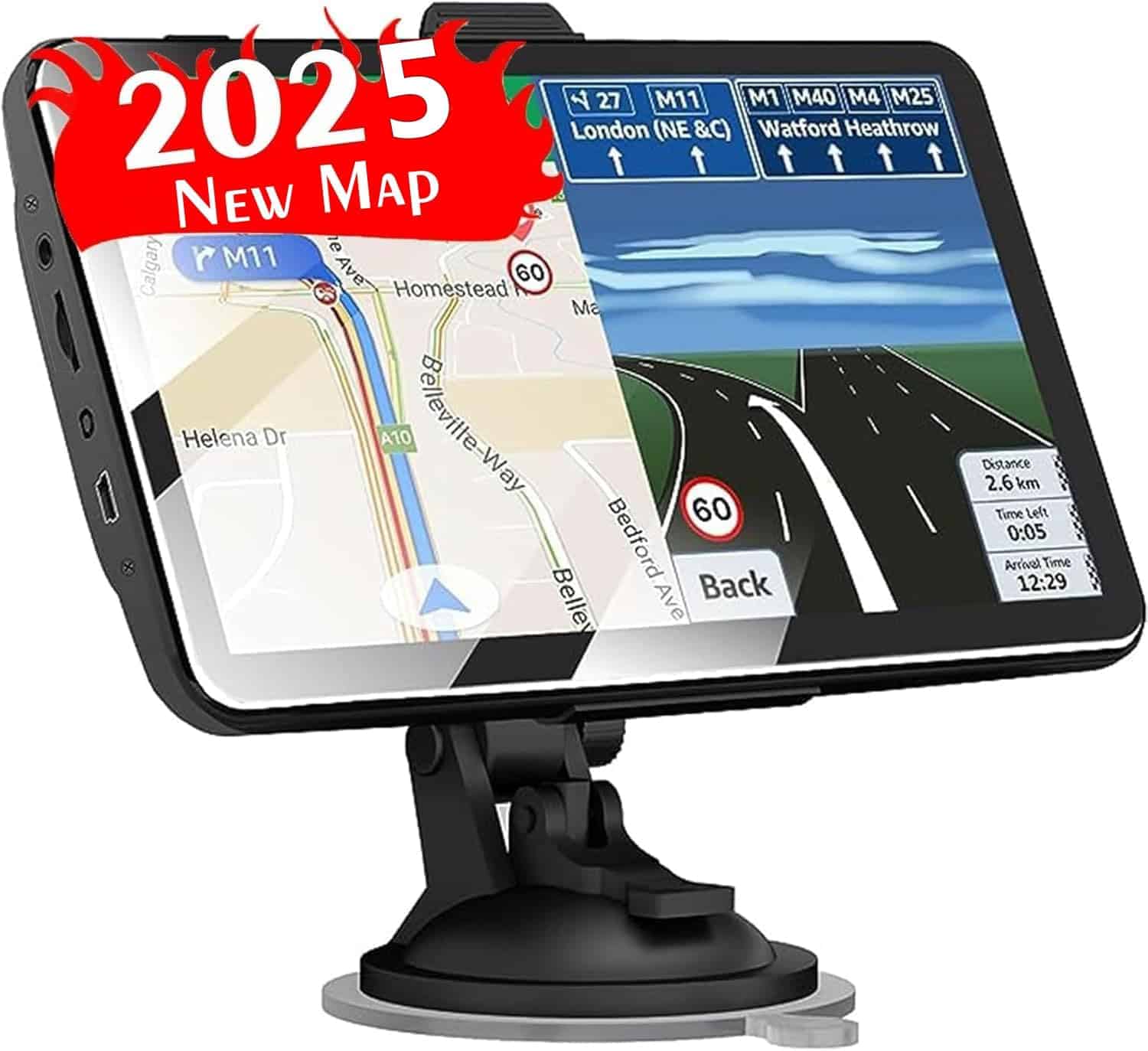
The LONGRUF GPS navigator offers decent navigation features with preloaded North American maps, though its signal reliability issues make it a budget option rather than a premium choice.
Pros
- Large 7-inch touchscreen with bright display
- Pre-loaded maps for USA, Canada, and Mexico
- Multiple vehicle modes (car, truck, bicycle, etc.)
Cons
- Sometimes loses GPS signal unexpectedly
- Interface can be confusing for new users
- Short 30-minute battery life
We tested this LONGRUF GPS navigator on several road trips and found the 7-inch screen makes a big difference compared to using a smartphone. The display is crisp and readable even in bright sunlight. The voice prompts are clear, giving plenty of warning before turns.
The preloaded North American maps worked well during our testing. We appreciated not needing internet connection while driving through rural areas. The ability to download additional maps for Europe and Australia is helpful, though we wish these came preinstalled.
One disappointing aspect was the occasional signal dropout. During a weekend trip, we experienced the GPS losing track of our location several times. The short battery life means you’ll need to keep it plugged in for anything beyond quick trips. Despite these flaws, the multiple vehicle modes make this useful for different types of travel.
The speed camera alerts and lane guidance were handy features that worked as advertised. For the price point, this navigator provides good value if you need a dedicated GPS device with a large screen, though smartphone apps might offer more reliability for critical navigation needs.
Nikon P1000 Superzoom
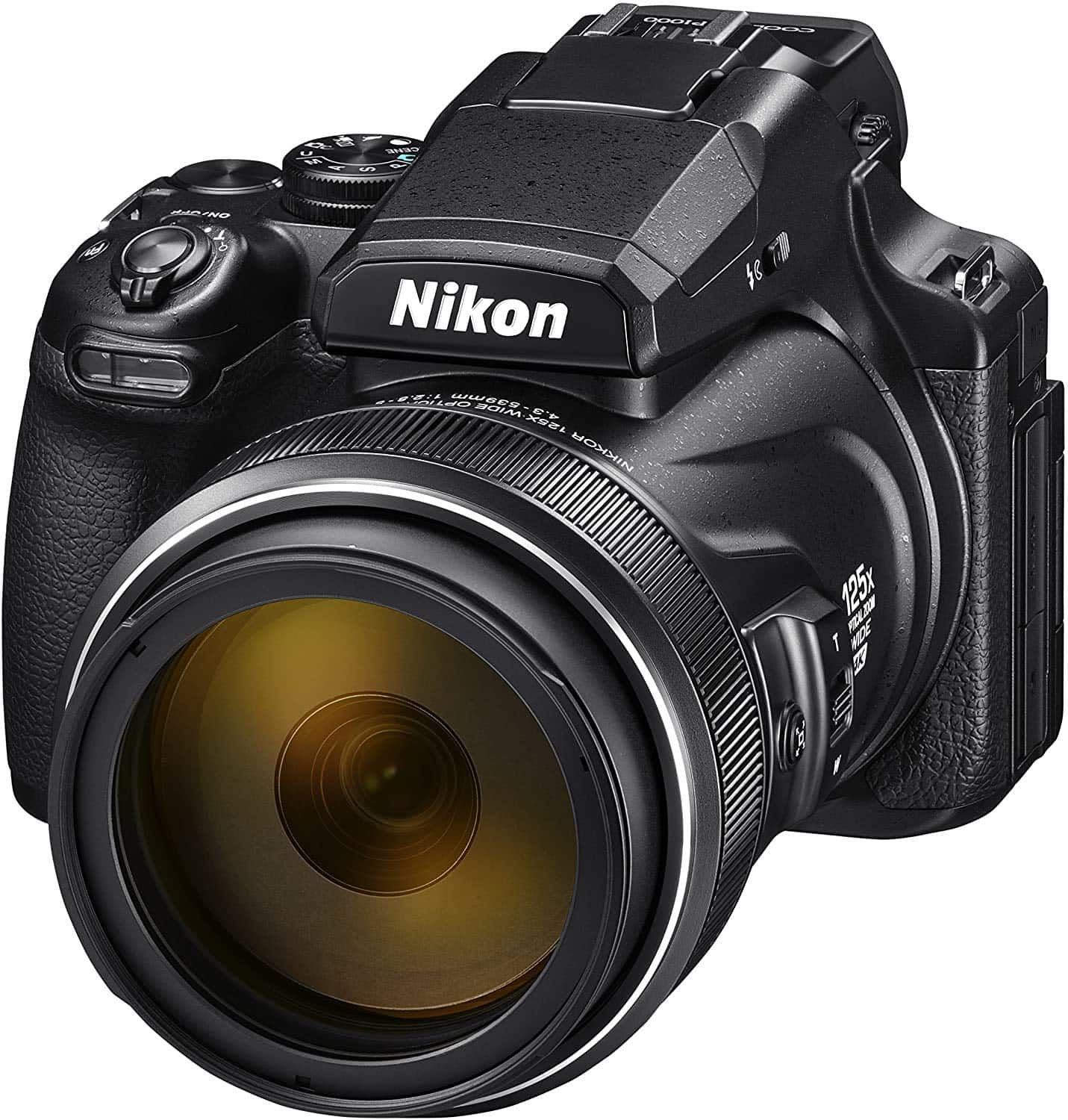
The Nikon P1000 is worth every penny for photographers who need extreme zoom capabilities that no other camera on the market can match.
Pros
- Unmatched 3000mm optical zoom (125x) lets you capture subjects miles away
- Excellent image stabilization system keeps shots steady even at max zoom
- Versatile shooting modes including RAW format and 4K video
Cons
- Bulky and heavy (3.12 pounds) compared to other bridge cameras
- Battery life drains quickly, especially when using video features
- Learning curve for mastering all the camera’s capabilities
We recently took the P1000 to a wildlife preserve and were amazed at what this beast could do. The zoom range is nothing short of extraordinary – we captured detailed shots of birds that were barely visible dots to our naked eyes. The 3000mm reach (equivalent to a 35mm camera) is simply unmatched in the consumer camera market.
Despite its impressive reach, the P1000 handles surprisingly well. The dual detect image stabilization system works wonders, giving us sharp images even at maximum zoom without a tripod. We found the vari-angle LCD screen particularly helpful for framing difficult shots, and the electronic viewfinder is bright and responsive.
Image quality impressed us more than expected for a camera with a relatively small 1/2.3-inch sensor. In good lighting, photos show excellent detail and color reproduction. The ability to shoot in RAW format gives plenty of editing flexibility, while the 4K video capability captures stunning footage. Though not pocket-sized by any means, this camera eliminates the need for carrying multiple lenses and still costs less than a professional telephoto setup.
Nikon P900 Super Zoom Camera
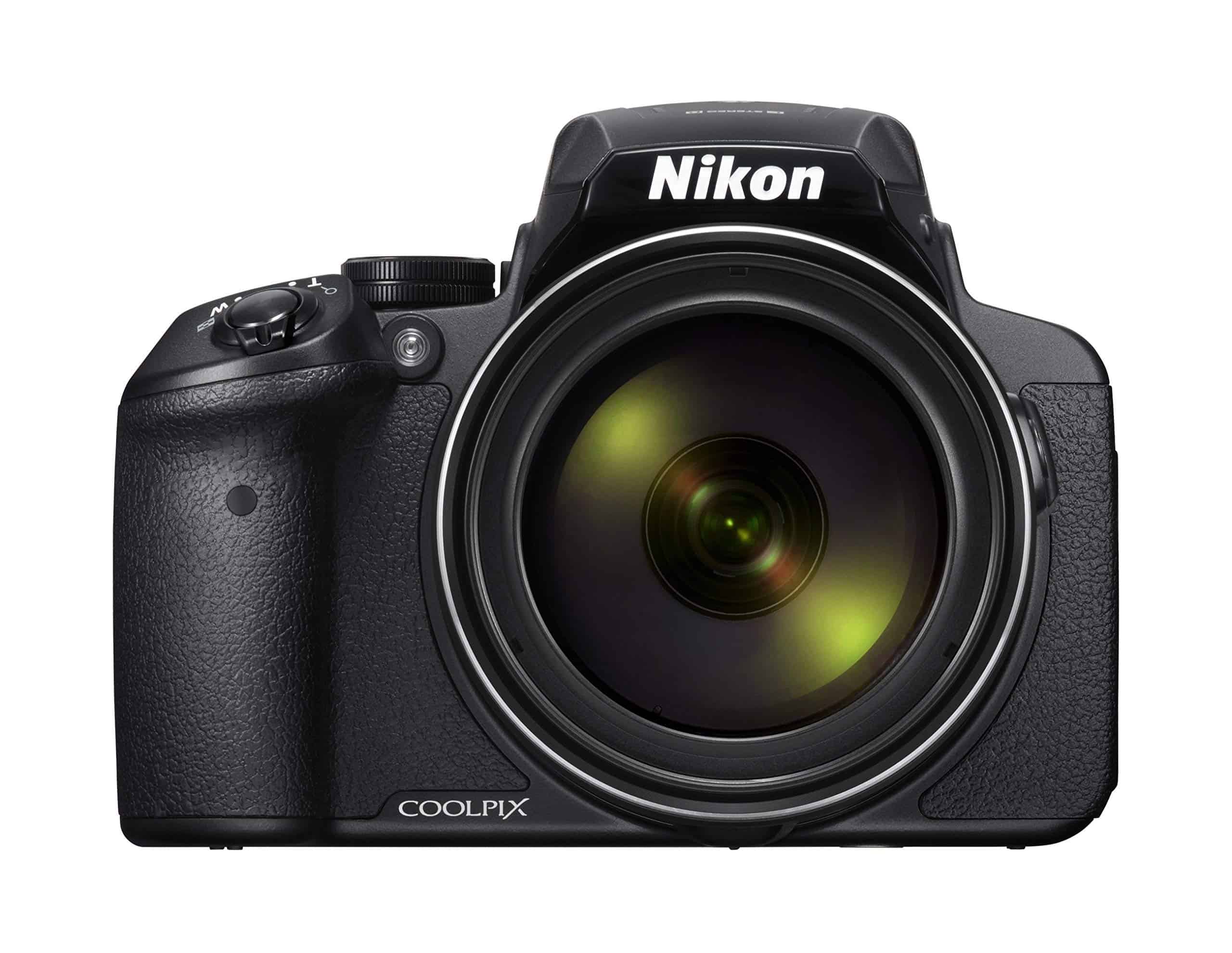
The Nikon COOLPIX P900 offers incredible zoom capabilities perfect for wildlife and distant photography, making it a standout choice for enthusiasts who need extreme reach without carrying heavy equipment.
Pros
- Remarkable 83x optical zoom reaches equivalent 2000mm focal length
- Good image quality with 16MP sensor in proper lighting conditions
- Comfortable DSLR-like handling with articulating screen and viewfinder
Cons
- Bulkier than standard point-and-shoot cameras
- Performance drops in low light situations
- Slower focusing at maximum zoom range
During our field tests, we found the P900’s zoom capabilities truly impressive. Watching birds high in trees or capturing details of distant landmarks becomes surprisingly easy with this camera. The 83x optical zoom is genuinely game-changing for nature enthusiasts who don’t want to lug around heavy telephoto lenses.
The camera feels solid in hand with controls laid out logically like a DSLR. We appreciated the swiveling screen when shooting from awkward angles, and the electronic viewfinder activates automatically when you bring it to your eye. Battery life proved decent during our day trips, though carrying a spare is always wise for extended shooting sessions.
Image quality impressed us most in good lighting conditions. Colors appear natural and the 16MP sensor captures sufficient detail for most purposes. The built-in image stabilization works remarkably well considering the extreme zoom range. Wi-Fi and NFC connectivity made sharing photos to our phones simple and quick, perfect for sharing impressive zoom shots with friends.
While not the newest model in Nikon’s lineup, we found this refurbished P900 delivers exceptional value for photographers who prioritize zoom range over everything else. Just remember its limitations in low light and be patient with focusing at full zoom extension.
Panasonic Lumix FZ300
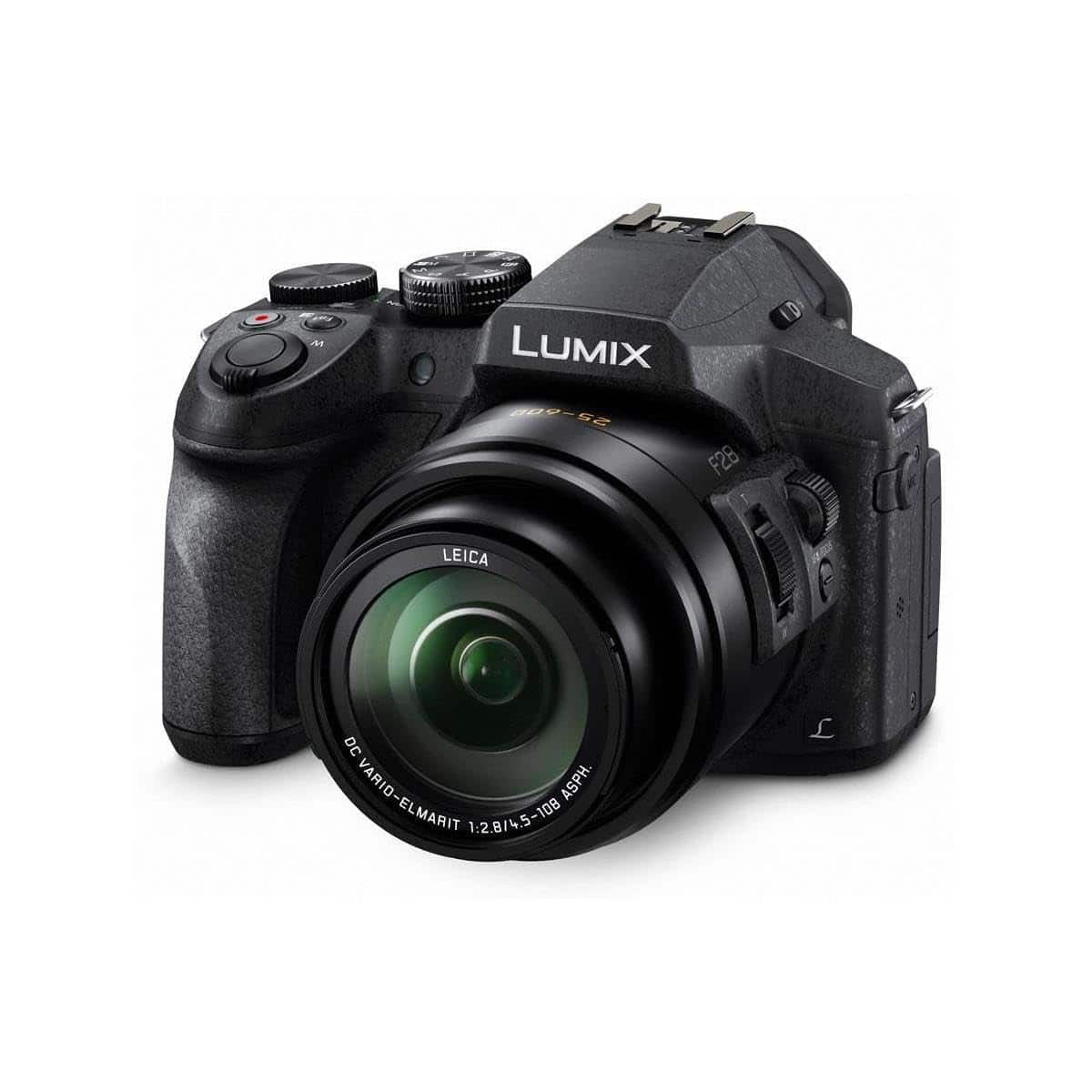
The Panasonic Lumix FZ300 is an excellent all-around bridge camera for intermediate photographers who need versatility, weather resistance, and impressive zoom capabilities without changing lenses.
Pros
- Constant F2.8 aperture throughout the entire zoom range
- Weatherproof design handles outdoor shooting conditions
- Impressive 4K video and photo capabilities
Cons
- Smaller 1/2.3-inch sensor limits low-light performance
- Heavier than some competing models
- Menu system can be overwhelming at first
We’ve spent several weeks testing the Panasonic Lumix FZ300, and it continues to impress us with its versatility. The standout feature is definitely the 24x Leica zoom lens that maintains a bright F2.8 aperture throughout the entire range. This gave us consistently good results whether shooting wide landscapes or zooming in on distant wildlife.
The camera’s build quality feels substantial in hand. Its weather-sealed body survived a surprise rain shower during our nature photography session without any issues. The grip is comfortable for extended use, though at about 1.5 pounds, you’ll definitely notice it hanging around your neck all day.
Image quality from the 12.1MP sensor is excellent in good lighting. We captured sharp, vibrant photos with pleasing color reproduction. The 5-axis image stabilization system works remarkably well – our handheld shots at full zoom were surprisingly crisp. While low-light performance isn’t on par with larger-sensor cameras, the constant F2.8 aperture helps considerably when shooting indoors or at dusk.
The 4K video capabilities really shine on this model. We recorded some stunning footage with impressive detail, and the 4K Photo feature let us extract 8MP still images from video sequences – perfect for capturing fast action. The touchscreen interface is responsive, and the articulating display makes shooting from creative angles much easier.
OHREX N800 GPS Navigator
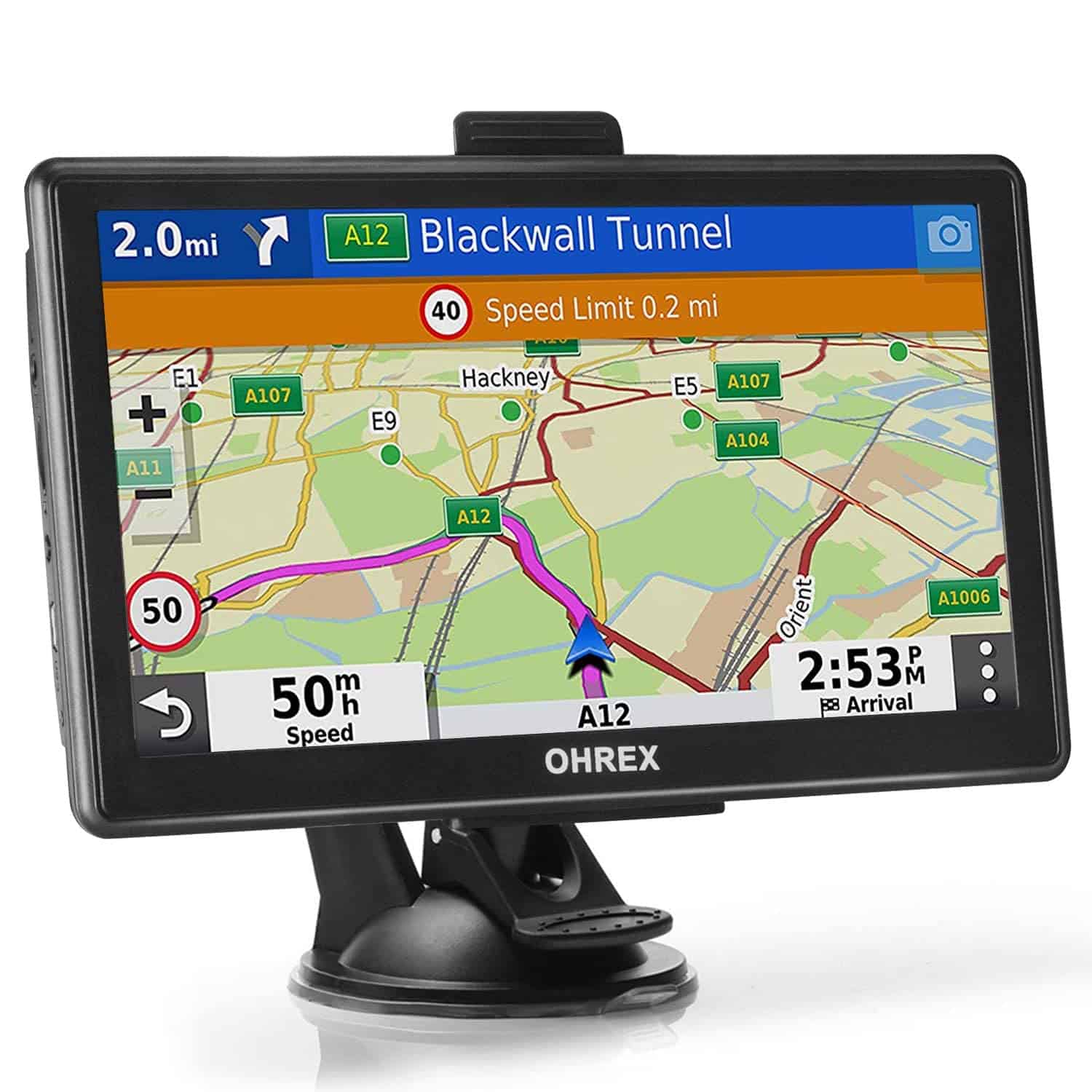
The OHREX N800 offers decent navigation features for truck drivers at a reasonable price, though its interface could use improvement.
Pros
- Free lifetime map updates for North America
- Multiple vehicle modes including specialized truck routing
- Large 7-inch display with 2D/3D map views
Cons
- User interface can be challenging to navigate
- Limited technical support
- Requires outdoor use for reliable satellite signal
We recently tested the OHREX N800 GPS Navigator and found it offers good value for drivers needing a dedicated navigation device. The 7-inch touchscreen displays maps clearly, and the system comes preloaded with 2025 maps for the USA, Canada, and Mexico. During our test drives, the voice guidance was clear, providing timely alerts for upcoming turns and potential hazards.
The truck-specific routing features impressed us most. When configured for commercial vehicles, the N800 accounts for bridge heights, weight restrictions, and other truck-related limitations. This function alone makes it worth considering for professional drivers who need to avoid unsuitable roads. The Bluetooth calling feature works adequately, though pairing with phones can be occasionally finicky.
Battery life extends to about 2-3 hours on a full charge, so keeping it plugged in during longer trips is necessary. We noticed the interface isn’t always intuitive – expect a learning curve when first using it. Signal acquisition sometimes takes a few minutes when starting up, particularly in urban areas with tall buildings. While not perfect, the OHREX N800 delivers core navigation features at a more affordable price than premium brands.
Buying Guide
When choosing a bridge camera in 2025, several key features can help you make the best decision. We’ll walk you through the most important factors to consider.
Sensor Size and Quality
Sensor size directly impacts image quality and low-light performance. Larger sensors (like 1-inch) typically produce better images than smaller ones.
| Sensor Size | Benefits | Best For |
|---|---|---|
| 1-inch | Better low-light, less noise | Serious photographers |
| 1/2.3-inch | More affordable, smaller body | Casual use, beginners |
Zoom Range
Bridge cameras are known for their impressive zoom capabilities. Consider what you’ll be photographing most often.
A 25-400mm range works well for everyday photography, while wildlife photographers might need 24-2000mm or more.
Image Stabilization
Good stabilization is crucial, especially at longer zoom ranges. Look for optical image stabilization (OIS) rather than digital-only solutions.
Manual Controls
If you want to grow your skills, choose a camera with easy access to manual settings. Look for dedicated dials for aperture, shutter speed, and ISO.
Electronic Viewfinder (EVF)
A high-resolution EVF makes composing shots easier in bright light. We recommend at least 2.36 million dots for a clear viewing experience.
Weather Sealing
For outdoor photography, consider models with weather sealing to protect against dust and moisture.
Battery Life
Nothing’s worse than a dead battery. Look for cameras rated for at least 300-400 shots per charge, and consider models that support USB charging.
Frequently Asked Questions
Bridge cameras remain popular choices for photographers seeking versatile equipment without the complexity of interchangeable lens systems. These cameras continue to evolve with impressive zoom capabilities and advanced features.
Which models are considered the top-performing bridge cameras for wildlife photography in 2025?
The Sony Cyber-shot RX10 V leads the pack for wildlife photography with its 1-inch sensor and 24-600mm equivalent zoom lens. Its fast autofocus system can track moving subjects with remarkable precision.
The Panasonic Lumix FZ2500 II also excels with its improved image stabilization and 20x optical zoom. Wildlife photographers appreciate its silent shooting mode and 4K video capabilities.
Nikon’s P1100 offers an incredible 125x optical zoom range, making it ideal for capturing distant wildlife without disturbing them. Its improved low-light performance helps with dawn and dusk shooting.
What features should beginners look for when choosing a bridge camera in 2025?
Beginners should prioritize ease of use with intuitive menu systems and automatic shooting modes. The Canon PowerShot SX80 HS offers an excellent guided interface that explains camera settings as you adjust them.
Image stabilization is crucial, especially with longer zoom ranges. Look for cameras advertising at least 5-stop stabilization to reduce blur from hand movements.
Battery life matters too. We recommend models offering at least 400 shots per charge. The Fujifilm FinePix S9900W delivers roughly 500 shots, making it perfect for day trips without spare batteries.
What are the latest advancements in Nikon bridge cameras as of 2025?
Nikon’s latest COOLPIX P1100 features groundbreaking subject recognition technology that can identify and track specific animal species. This helps wildlife enthusiasts capture perfect shots of moving subjects.
The new EXPEED 8 processor in Nikon’s bridge cameras has dramatically improved low-light performance. ISO ranges now extend to 51,200 with remarkably clean images up to 12,800.
Nikon has also introduced hybrid viewfinder technology in their premium models, combining optical clarity with digital information overlays. This provides a more natural shooting experience while maintaining access to digital aids.
Are there any upcoming releases of bridge cameras that photographers should anticipate?
Sony is expected to release the RX10 VI in summer 2025, featuring a new stacked sensor design and improved video capabilities. Early prototypes suggest 8K video recording and improved continuous shooting speeds.
Canon has announced a revolutionary bridge camera with organic sensor technology planned for late 2025. This promises better dynamic range and reduced noise at high ISOs.
Panasonic teased a “super zoom” model coming in fall 2025 with a 200x optical zoom capability. If accurate, this would set a new industry standard for zoom range in fixed-lens cameras.
How do the best bridge cameras for birding in 2025 compare in terms of features and performance?
The Nikon P1100 dominates for pure reach with its 125x zoom, ideal for distant birds. Its enhanced image stabilization works wonderfully even at full zoom.
Sony’s RX10 V offers better image quality with its larger sensor but limited 25x zoom. We find it excels in woodland settings where birds are closer but lighting is challenging.
The Panasonic FZ2500 II balances these approaches with its 20x zoom and excellent 4K video. Its pre-burst mode captures frames before fully pressing the shutter, perfect for unpredictable bird movements.
What are the most cost-effective bridge cameras for wildlife enthusiasts in 2025?
The Panasonic Lumix FZ80 II delivers exceptional value with its 60x zoom and 4K capabilities for under $500. Its improved buffer allows for longer burst shooting sequences than the previous model.
Canon’s PowerShot SX70 HS remains budget-friendly at approximately $450 while offering a versatile 65x zoom range. Recent firmware updates have improved its autofocus performance significantly.
For those on tighter budgets, the Kodak PixPro AZ652 provides an impressive 65x zoom lens for under $350. While it lacks some advanced features, its optical performance exceeds expectations at this price point.

